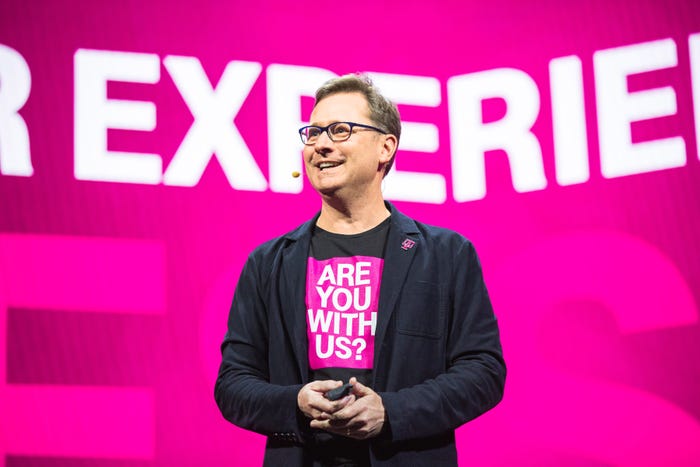Mobile data system serves Australian cable TV operator:Mobile data system serves Australian cable TV operator:
The fleet of 1,500 vehicles used in the installation of a fiber-optic cable backbone made nationwide communication crucial.
May 1, 1997
The fleet of 1,500 vehicles used in the installation of a fiber-optic cable backbone made nationwide communication crucial. A country-wide trunked radio system and a fast, reliable, mobile data system were essential components.
In 1995, one of the two largest cable TV (CATV) service providers in Australia, Optus Vision, was faced with the enormous task of installing backbone fiber-optic cable to serve hubs in the country’s largest cities and then to route cables to customer premises. A fleet of 1,500 vehicles was required.
Communication with this massive fleet would require a country-wide trunked radio system, order takers and dispatchers in each large geographic area, trunked radios in each vehicle and a fast, reliable mobile data system to facilitate the transmission of a tremendous number of messages every day from the dispatcher to each fleet vehicle.
In the past, companies would have tried to communicate via dispatch voice radio. This method has a number of problems: 1. Voice messages require a lot of airtime. 2. Voice messages can easily be misconstrued, possibly resulting in the recipient taking an incorrect action. 3. The number of radio channels necessary to provide capacity for 1,500 would require a prohibitively expensive backbone system. 4. The use of cellular phones was rejected because of the limitations of voice communications and the high cost of airtime, despite the fact that Oputus is a nationwide cellular carrier.
Nationwide mobile network Optus Vision requested that King Communications Australia design a nationwide mobile data system. The first step was to list Optus’ requirements, which included the following: 1. Nationwide coverage for voice and mobile data messages. 2. Simultaneous voice and mobile data transmission capability. 3. The ability to call individual vehicles and specific vehicle groups for dispatch calls, plus telephone interconnect for certain vehicles, over a wide area. 4. A vehicle radio capable of future upgrading to expanded data capability. 5. Rugged mobile data terminals with large display screens (readable in all light conditions) and status message buttons for simplified communications of detailed messages between the vehicle and the base. 6. Messaging software that provides fast, reliable data transfer between the mobile terminal and the base. 7. Operating capability with various types of trunked radio systems, pending final selection of the trunking format. 8. Operating capability with accessories such as bar code readers, printers and keyboards. 9. A flexible, user-friendly dispatch software program that meets a variety of customer requirements, not all of which were defined initially.
The communications system designed for Optus Vision uses the MPT1327 trunking format with Nokia Actionet controllers and base stations. It includes more than 30 sites in metropolitan areas with 7-20 UHF channels per site. MPT1327 provides wide-area, multisite coverage; simultaneous voice and data transmission; and telephone interconnect. Nokia R40 trunking radios were installed in the vehicles.
Australia is large, almost the size of the continental United States. Despite the large area it covers, the system is capable of connecting any vehicle in the country with a central dispatcher after hours, an important safety feature. Figure 1 on page 46 shows the distances between the state capitals.
With the trunked radio system designed, the next step was to develop a mobile data dispatch system outline diagram that incorporates the principle hardware and software to be integrated into each local area system. (See Figure 2 on page 50.) This system connects directly with Optus’ CMBS internal software and communications system. It provides a variety of customized mobile dispatch features and reliable data transmission over the MPT1327 system using our proprietary software system.
The messaging software system can provide as much as 6,000bps effective data throughput, even with 12.5kHz channel spacing. It incorporates a proprietary data compression and error-correction algorithm and operates reliably in marginal communications conditions. The Windows-based program enables a central control station to call individual vehicles by radio or telephone and downloads the data required to troubleshoot problems. The program comes with a dynamic data exchange (DDE) protocol and source code that allow simplified interface with virtually all available mobile dispatch software programs. For Optus, TransData’s Trans-send transport management system software was selected and interfaced with the software messaging system and Optus’ CMBS internal system.
CATV customer installation requests flow from the CMBS system to the Trans-send transport management system. The Workforce management team allocates the job to a field technician. The job information and technician number are sent to the software messaging system data communications controller.
The software messaging system is responsible for ensuring that the data are sent to the mobile KDT and for receiving the acknowledgment from the terminal. Once the mobile terminal acknowledges message receipt, the software messaging system advises the transport management system that the job is in the vehicle. If no acknowledgment is forthcoming within a predetermined time, then the software messagingsystem advises the transport management system that the job is not in the vehicle.
The field technician is required to accept the job by keying the acceptance key or risk that the job may be retrieved by the Workforce management team (using the transport management system) for reallocation to another technician. The technician also enters other information during the day that advises when jobs start and finish, which serial numbers are used and other relevant information. It is possible with the software messaging system controller to monitor the performance of the data throughput, call success rates and other characteristics. These can be used to fine-tune the system and to improve productivities.
Installation of the first MPT1327 system sites was completed in early 1996, and installation of R40 trunked mobile radios and King’s DT-5000 mobile data terminals began in the second quarter. By June 30, 1996, 700 mobile radios and 250 mobile data terminals had been installed. By the end of 1996, these numbers reached about 1,500 mobiles and 700 mobile data terminals.
Law enforcement agencies across the United States now have access to newly developed mobile data technology that will increase officer safety and, ultimately, community safety, thanks to AT&T Wireless Services, Tampa, FL; HTE, Orlando, FL; and Software Corporation of America (SCA), Stamford, CT.
SCA’s Premier MDT 3.0, a public safety mobile data communications system, and HTE’s crime management system and CAD III, a public safety computer-aided dispatch (CAD) system, have been integrated to perform over AT&T wireless networks to bring electronic state and federal law enforcement information and resources to laptop computers mounted in police cars.
SCA’s Premier MDT software has been enhanced in version 3.0 to include text-to-voice, in-vehicle paging, mugshot and in-vehicle mapping. The text-to-voice feature “reads” vital information from the computer to the officer over speakers, allowing the officer to drive while responding to a call. Previously, officers had to read information from the computer screen and, by law, could not be moving at the same time.
Officers can also download mugshots to their laptops from the department’s system, page officers from their laptops and use in-vehicle mapping with GPS to track and monitor vehicle location and map incident addresses.
With this alliance, more officers have arrest records, warrant records and license plate information at their fingertips. HTE’s CAD system allows the dispatch center to keep track of equipment and personnel locations, routing closest available units for response to calls and tracking call status through to completion. AT&T’s Wireless Services is the cellular digital packet data (CDPD) service provider for the wireless system.
Carolina Power & Light, Raleigh, NC, has selected the Resource Management (RM) System from Alliance Systems, Itasca, IL, to improve the utility’s emergency and service response time.
The system relies on client-server technology and operates within two-way, radiodata networks. At Carolina Power & Light, the RM System electronically links the utility’s mobile field workforce with dispatchers and corporate data systems using wireless data technology and mobile terminals. The system includes such features as on-line order scheduling, advanced planner and dispatcher functionality, productivity reporting systems and intelligent mobile terminal processing. The system also provides a graphical Windows-based user interface, which allows personnel to use pull-down menus, simplified function keys and windows.
Scott is president of King Communications U.S.A., Orlando, FL. The assistance of Stuart Moffat, product engineering manager, King Australasia, is acknowledged. King Communications Australia designed the mobile data system described in this article. The proprietary messaging software system that King supplies is called HOST. The American company serves the United States, Canada and South America with mobile data systems compatible with LTR, SmartNet and Privacy Plus trunking formats in addition to the MPT1327 format described in this article.



